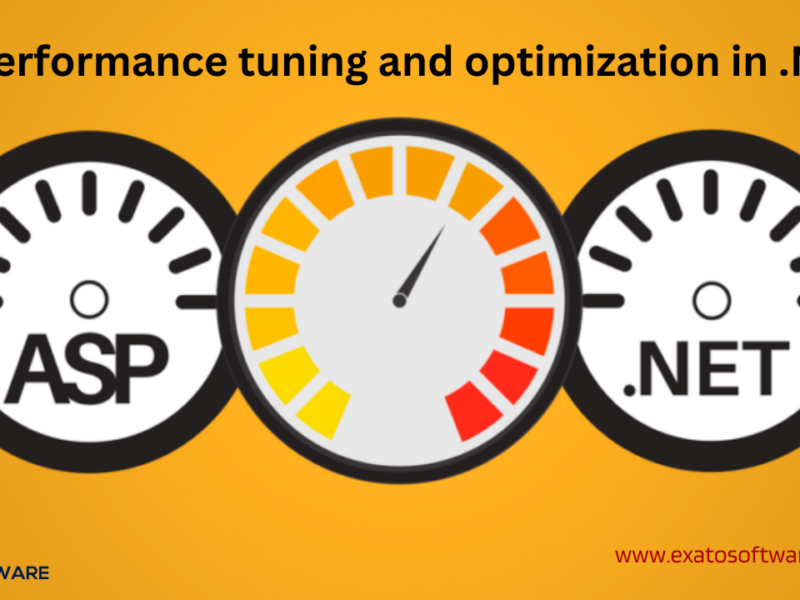What are Websockets?
Real-time communication with WebSockets is a technique that enables bidirectional communication between a client (such as a web browser) and a server over a single, long-lived connection. This is in contrast to the traditional request-response model of communication where the client sends a request to the server, and the server responds. WebSockets allow for more interactive and dynamic applications by establishing a persistent connection that enables both the client and server to send messages to each other at any time.
How WebSockets Work
- Handshake: The communication begins with a WebSocket handshake. The client sends an HTTP request to the server with an “Upgrade” header indicating that it wants to establish a WebSocket connection. If the server supports WebSockets, it responds with an HTTP 101 status code, indicating that the protocol is switching from HTTP to WebSocket.
- Persistent Connection: Once the handshake is complete, a full-duplex communication channel is established between the client and the server. This channel remains open, allowing data to be sent in both directions at any time.
- Data Frames: Data sent over a WebSocket connection is transmitted in small, independent frames. Each frame can carry a part of a message or can represent a whole message, depending on its size. These frames are binary or text-based.
- Bi-directional Communication: WebSockets allow both the client and the server to send messages independently. This is in contrast to traditional HTTP, where the client initiates communication by sending a request, and the server responds. With WebSockets, either party can send data whenever it needs to without waiting for a request.
- Low Latency and Overhead: WebSockets reduce latency compared to traditional HTTP by eliminating the need to open and close a new connection for each communication. The overhead of HTTP headers in each request/response is also reduced since WebSockets use a simpler framing mechanism.
- Event-Driven Model: WebSockets are well-suited for real-time applications like chat applications, online gaming, financial dashboards, or collaborative editing tools where instant updates are crucial. The server can push data to the client as soon as it becomes available, making it more efficient for applications requiring real-time updates.
Popular libraries and frameworks, such as Socket.IO for Node.js or the WebSocket API in browsers, make it easier to implement and work with WebSockets. These tools abstract some of the complexities of the WebSocket protocol, making it accessible for developers building real-time applications.
Where WebSockets are most useful?
WebSockets are particularly beneficial for applications that require real-time communication and updates. Here are some types of applications that can greatly benefit from using WebSockets.
- Chat Applications: Real-time chat applications, including instant messaging and group chats, benefit from the low latency and bidirectional communication capabilities of WebSockets.
- Collaborative Editing Tools: Applications that involve multiple users collaborating on the same document or project in real time, such as Google Docs, benefit from the instant updates provided by WebSockets.
- Online Gaming: Multiplayer online games often require real-time communication to synchronize game states and provide a seamless gaming experience. WebSockets help reduce latency, making them suitable for online gaming applications.
- Financial Applications: Real-time data is crucial in financial applications where stock prices, currency exchange rates, or other market data need to be updated instantly.
- Live Streaming: Applications that involve live streaming of data, such as live video or audio broadcasting, can use WebSockets to provide low-latency updates to clients.
- Notifications and Alerts: Any application that needs to deliver instant notifications or alerts to users can benefit from WebSockets. This includes social media notifications, system alerts, or real-time updates on events.
- Collaborative Tools: Tools that support real-time collaboration, such as project management platforms, whiteboard applications, or team collaboration tools, can enhance user experience by utilizing WebSockets.
- IoT (Internet of Things) Applications: Real-time communication is essential for IoT applications where devices need to communicate and share data in real time.
- Live Sports or News Updates: Applications providing live updates for sports scores, news, or other real-time events can leverage WebSockets to deliver timely information to users.
- Customer Support Chat: WebSockets can improve the responsiveness of customer support chat applications, allowing for instant communication between users and support agents.
- Dashboard and Monitoring Applications: Real-time dashboards that display live data, such as analytics, system monitoring, or performance metrics, benefit from WebSockets for timely updates.
In these types of applications, WebSockets provide a more efficient and responsive solution compared to traditional request-response mechanisms. They enable a continuous flow of data between clients and servers, reducing latency and improving the overall user experience in scenarios where real-time updates are essential.
Socket.io – How to use it with NodeJS?
Socket.IO is a popular library for enabling real-time, bidirectional communication between clients and servers in Node.js applications. It simplifies the implementation of WebSockets and provides additional features like fallback mechanisms for environments where WebSockets may not be supported.
Here’s a basic guide on how to use Socket.IO with Node.js to build apps with real-time communication:
Step 1: Install Socket.IO
Make sure you have Node.js installed on your machine. Then, create a new Node.js project and install Socket.IO using npm:
npm init -y
npm install socket.ioStep 2: Set up the Server
Create a server file (e.g., server.js) and set up a basic HTTP server using Express (a popular web framework for Node.js) and integrate Socket.IO.
```javascript
const express = require('express');
const http = require('http');
const socketIO = require('socket.io');
const app = express();
const server = http.createServer(app);
const io = socketIO(server);
app.get('/', (req, res) => {
res.sendFile(__dirname + '/index.html');
});
// Handle socket connections
io.on('connection', (socket) => {
console.log('A user connected');
// Handle messages from clients
socket.on('chat message', (msg) => {
console.log('message: ' + msg);
// Broadcast the message to all connected clients
io.emit('chat message', msg);
});
// Handle disconnections
socket.on('disconnect', () => {
console.log('User disconnected');
});
});
// Start the server
const PORT = process.env.PORT || 3000;
server.listen(PORT, () => {
console.log(`Server is running on http://localhost:${PORT}`);
});
```Step 3: Create a Simple HTML File
Create a simple HTML file (e.g., index.html) that includes Socket.IO client library and provides a basic interface for your application:
<!DOCTYPE html>
<html lang="en">
<head>
<meta charset="UTF-8">
<meta name="viewport" content="width=device-width, initial-scale=1.0">
<title>Socket.IO Chat</title>
</head>
<body>
<ul id="messages"></ul>
<form id="form" action="">
<input id="m" autocomplete="off" /><button>Send</button>
</form>
<script src="/socket.io/socket.io.js"></script>
<script src="https://code.jquery.com/jquery-3.6.4.min.js"></script>
<script>
$(function () {
var socket = io();
// Handle form submission
$('form').submit(function(){
socket.emit('chat message', $('#m').val());
$('#m').val('');
return false;
});
// Handle incoming messages
socket.on('chat message', function(msg){
$('#messages').append($('<li>').text(msg));
});
});
</script>
</body>
</html>Step 4: Run the Server
Run your server using the following command:
node server.jsVisit http://localhost:3000 in your web browser, and you should see the basic chat interface. Open multiple browser tabs or windows to simulate multiple users and see how the messages are broadcasted in real-time.
This example demonstrates a basic chat application using Socket.IO. You can extend and customize it based on your application’s requirements.
Socket.IO provides various features like rooms, namespaces, and middleware. Let us explore these features.
- Rooms:
Rooms in Socket.IO allow you to organize clients into groups, making it easier to broadcast messages to specific subsets of connected clients. To use rooms:
On the Server:
const io = require('socket.io')(http);
io.on('connection', (socket) => {
// Join a room
socket.join('roomName');
// Emit a message to the clients in a specific room
io.to('roomName').emit('message', 'Hello, roomName!');
});On the Client:
// Join a room on the client side
socket.emit('joinRoom', 'roomName');
// Listen for messages in the joined room
socket.on('message', (msg) => {
console.log(`Message from server: ${msg}`);
});- Namespace:
Namespaces in Socket.IO allow you to create separate communication channels. This can be useful for separating concerns in your application. To use namespaces:
On the Server:
const io = require('socket.io')(http);
const nsp = io.of('/namespaceName');
nsp.on('connection', (socket) => {
console.log('Client connected to namespace');
});On the Client:
// Connect to a specific namespace on the client side
const socket = io('/namespaceName');- Middleware:
Middleware in Socket.IO enables you to intercept and modify the communication flow between the client and the server. This can be useful for authentication, logging, or other custom processing. To use middleware:
On the Server:
const io = require('socket.io')(http);
// Middleware for authentication
io.use((socket, next) => {
const token = socket.handshake.auth.token;
if (isValidToken(token)) {
return next();
}
return next(new Error('Authentication failed'));
});
io.on('connection', (socket) => {
console.log('Client connected');
});In the above example, the use method is used to define middleware. The next function is called to pass control to the next middleware or the connection handler.
These features allow you to create more organized and structured real-time applications with Socket.IO. Rooms are useful for broadcasting messages to specific groups of clients, namespaces provide a way to create separate communication channels, and middleware allows you to customize the behavior of the communication process. Using these features, you can build scalable and modular real-time applications with Socket.IO.
Scenarios where WebSockets may not be the best fit
Now it is not necessary for you to use WebSockets everywhere. Sometimes you are better off by not using these. Here are few scenarios where you should think twice before using WebSockets and go with traditional ways.
- Simple Request: Response: If your application primarily involves simple request-response interactions without a need for real-time updates, using traditional HTTP may be more straightforward and efficient.
- Low Latency Not Critical: If your application doesn’t require low-latency communication and real-time updates are not crucial, the overhead of maintaining a WebSocket connection may not be justified.
- Stateless Operations: For stateless operations where maintaining a continuous connection is unnecessary, such as fetching static content or performing one-time data retrieval, using regular HTTP might be more appropriate.
- Limited Browser Support: While modern browsers support WebSockets, if you need to support older browsers or environments where WebSocket connections are not feasible, you might consider alternative technologies like long polling or server-sent events.
- Resource Constraints: In resource-constrained environments, such as on IoT devices or with limited bandwidth, the overhead of maintaining WebSocket connections might be too costly. In such cases, more lightweight communication protocols may be preferable.
- Compatibility with Existing Infrastructure: If your application needs to integrate with existing infrastructure that doesn’t support WebSockets, implementing and maintaining support for WebSockets might be challenging.
- Security Concerns: In some scenarios, the use of WebSockets might introduce security concerns. It’s important to implement secure practices, such as using secure WebSocket connections (WSS) and handling security vulnerabilities effectively.
- Caching and CDN Optimization: If your application heavily relies on caching and content delivery network (CDN) optimization, WebSockets may not provide the same level of benefit as traditional HTTP requests that can be easily cached.
- Simple RESTful APIs: For simple RESTful APIs where the request-response model is sufficient and real-time updates are not a requirement, using traditional REST APIs may be more straightforward.
- Limited Browser Tab/Window Communication: If your use case involves communication between tabs or windows of the same browser, alternatives like Broadcast Channel API or shared local storage might be more appropriate.
In these scenarios, it’s crucial to evaluate the specific needs of your application and consider factors such as simplicity, compatibility, resource constraints, and security when deciding whether to use WebSockets or other communication mechanisms. Each technology has its strengths and weaknesses, and the choice depends on the specific requirements of your application.



